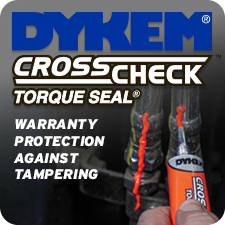Compact AGVs: No such thing as one size fits all
By Gerard Vilarrasa
Automated Guided Vehicles (AGVs) come in a wide range of sizes, from those capable of handling a few pounds of cargo to those that can manage tons. A wide range from units as small as a canister vacuum cleaner to those as large as an automobile. While all AGVs can boost productivity, reduce costs, and enhance safety, users with modest load-handling needs can also benefit from the unique operational and cost efficiency that smaller AGVs provide.
Load Considerations
AGV manufacturers tailor their offerings to published load parameters, and overloading can lead to malfunctions or reduced efficiency. Tasks such as transporting automobile bumpers or shipping containers require multi-ton capabilities, but in functions like picking electronic components or pharmaceutical ingredients from storage and transporting them to an assembly line, smaller AGVs offer significant advantages.
The smaller AGVs can transport significant loads, making them a robust solution for high-density environments with constant transportation demands. With a load handling capacity of up to 250 kilograms, the small AGVs can move loads from tables, shelves, or platforms.
The value of the small AGVs is even more pronounced when compared to human capabilities. For most applications, the AGV will be more precise, faster, and more flexible, or at least accomplish it with less strain than for human operators.
Optimizing Available Space
While larger AGVs may struggle in limited spaces, compact AGVs come with a smaller turning ratio, enabling the ability to navigate through dynamic production spaces. The compact dimensions help maneuver easily through narrow aisles, doorways, and tight spaces that their larger counterparts cannot and can go where humans cannot.
Multifunctional AGV platforms optimize space further. Not only do they lift loads for transport, but they can also rotate them independent of the load to position them better for delivery, which speeds orientation, streamlines delivery, and shortens production cycles. They can be equipped with tools such as robot arms that can function as cobots to assist human operators in performing numerous tasks.
Their compact size enables the creation of high-density storage areas, where more products can be stored in less space, significantly optimizing space utilization. Such versatility optimizes material flow, for example, moving components from warehouses to assembly lines or bringing semi-finished products back to the warehouse.
Programmed Navigation
Access to real-time data and seamless connectivity with central control systems enables data-driven decision-making and helps small AGVs take full advantage of their compact size. Digital navigation technologies control and laser sensors guide safe movement along pre-programmed paths, enhancing adaptability to dynamic environments and real-time responsiveness to changes, when you have a higher system deciding for them. With a Fleet manager, they detect travel path markers or obstructions to map their movements and adapt to changing floor plans and work environments. It optimizes travel paths for performance, safety, floor space utilization, and battery life.
Increased Efficiency
Space optimization and smart navigation combine to enable new heights of efficiency in manufacturing and warehouse operations. While larger AGVs might excel in handling heavy loads over long distances, smaller AGVs shine in tasks involving frequent, shorter-distance movements. Automating repetitive tasks minimizes human error, optimizes workflow, and enables continuous operation, contributing to increased throughput and productivity. It is particularly effective in compact workspaces and operations that must run 24/7.
Furthermore, by automating previously manual tasks, smaller AGVs can create opportunities for workers to add value to operations by performing more skilled jobs, such as system management and maintenance, addressing the evolving needs of the workforce.
Easy Scalability and Integration
Small AGVs offer a scalable automation solution, allowing businesses to start with a few units and gradually expand their fleet as needed. This phased approach to automation eases adaptation to changing production demands without significant upfront investments.
It is easier to integrate smaller AGVs and communicate with other plant systems, such as warehouse management systems (WMS) and manufacturing execution systems (MES).
Faster ROI
The cost reductions achieved through maneuverability, productivity, scalability, and integration capabilities all contribute to a quick return on investment. The need for minimal site modifications contributes to rapid deployment and minimal downtime, and the low initial costs can mean that they may be considered a capital expense.
Growing Importance
Small AGVs are already revolutionizing industrial operations in various sectors, enhancing material movement efficiency in manufacturing, automating warehousing and distribution tasks, facilitating healthcare supply transport, and supporting retail back-end operations.
As industrial advancements drive innovation, compact AGVs will become an increasingly important part of the automation mix, with the potential for even broader integration with other automated systems like drones and robotic arms. Advancements in AI, machine learning, IoT, battery technology, and wireless charging will further enhance their efficiency and operational capabilities.
Businesses seeking agile and scalable automation solutions should assess their requirements for load, space utilization, intelligent navigation, and overall efficiency improvement to find the smallest AGV unit that meets their needs.

Gerard Vilarrasa is the product manager at Kivnon. Electrical engineer with almost a decade of experience in the industrial sector, the majority of them in mobile robotics product development and management at Kivnon.














